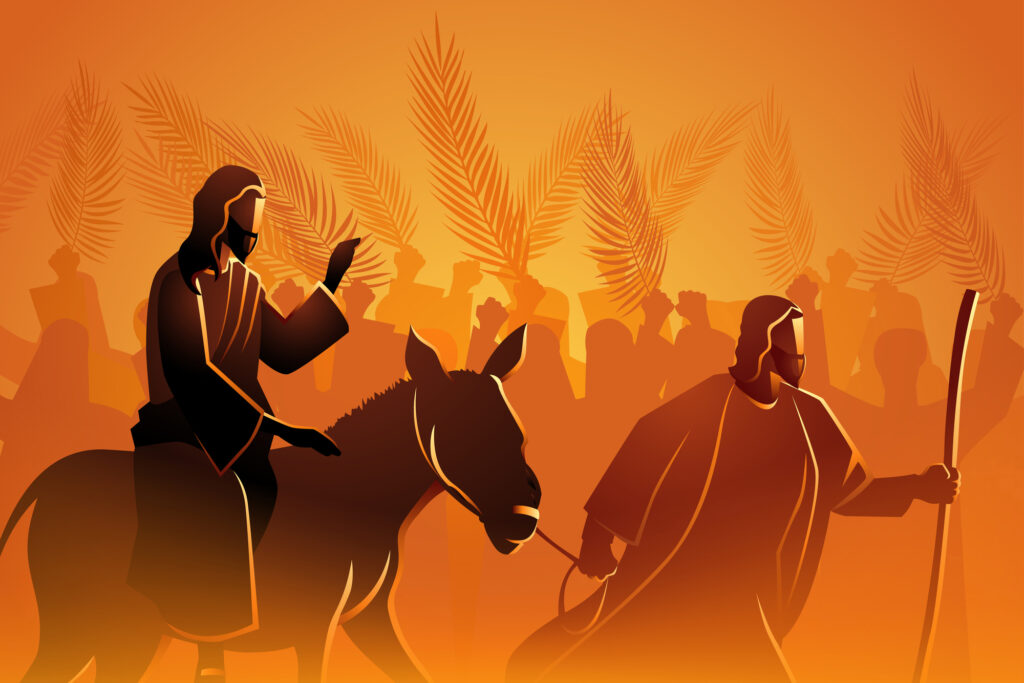
In a musical composition, the Prelude serves to introduce motifs that will be developed in the larger work. Similarly, as we begin the journey we call ‘Passion Week’, the liturgy of Palm Sunday acts as a Prelude, containing the themes that will develop over the days that follow. As we walk in Jesus’ footsteps starting from Bethany and ending at Calvary, we become pilgrims. During this Jubilee Year of 2025, we are urged by Pope Francis to make this journey a Pilgrimage of Hope.
The first act of Palm Sunday’s liturgy has us setting out to Jerusalem where crowds hail Jesus as Messiah, a King who comes in God’s name. In setting out on the journey of this Jubilee Year, Pope Francis reminds us, we need to meet Jesus ‘personally’ as the ‘door of our salvation’, the one who is ‘our hope’. [1] As today’s world writhes in political and social turmoil, can we confidently proclaim this hope?
The readings of Palm Sunday continue to unfold what we will encounter on the journey. Isaiah (50: 4-7) assures us that discipleship will call us to proclaim God’s message of faithfulness as Jesus did, even in the face of opposition and ridicule. Against a world Pope Francis describes as ‘discouraged, pessimistic and cynical’, we are called to ‘rejoice in hope, be patient in suffering, and persevere in prayer.’ [2]
The psalmist of old (Psalm 22) lamented feelings of abandonment, isolation, and despair as Jesus did, yet also expressed, like Jesus, trust and hope in God’s deliverance. As we pray the Responsorial Psalm on Palm Sunday, we might stand in spirit with those for whom ‘the problems of life and death, of guilt and suffering, remain unsolved, so that (they) are frequently thrown into despair’. On their behalf, let us affirm our belief that our lives, no matter what the circumstance, are ‘directed to an encounter with the God of glory.’ [3]
Jesus’ openness to God’s will, says St Paul, led him to empty himself and, as servant, generate life for the many (Second Reading, Phil. 2: 6-11). Believers, too, must follow Jesus’ example of humility and service. At a personal level, they can embody what Pope Francis describes in the symbol of church buildings, sacraments and ritual: ‘oases of spirituality and places of rest on the pilgrimage of faith, where we can drink from the wellsprings of hope.’ [4]
The Reading of Luke (22: 1-23, 56) leads us into the hinge-points of the Passion of Jesus Christ – the Last Supper, his arrest, trial and eventual crucifixion. From first to last, it is an account of self-giving love. Shame, suffering and isolation give way to a silence that reveals ultimate meaning for which there are no words. Death does not have the final say.
As we walk through this Passion Week, let us do so as pilgrims on a Journey of Hope. ‘The death and resurrection of Jesus is the heart of our faith and the basis of our hope.’ [5] In the unknowing of life we find confidence when we follow him.
Mary Cresp rsj
Footnotes:
[1] Pope Francis, Spes Non Confundit, par. 1, 9 May, 2024.
[2] Spes Non Confundit, par. 1 and Rom. 12:12, par. 18.
[3] Spes Non Confundit, par. 19.
[4] Spes Non Confundit, par. 5.
[5] Spes Non Confundit, par.20.
